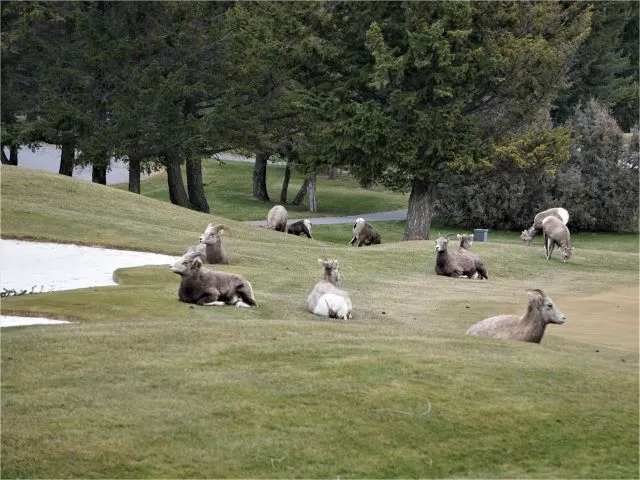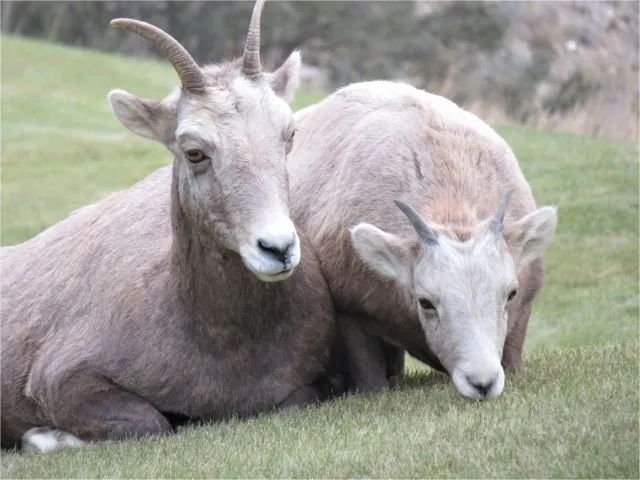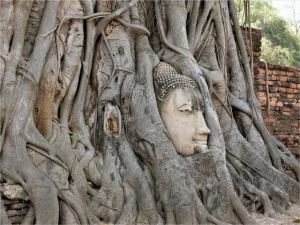Why Bighorn Sheep Ram Heads
- by Mohamed Adam

Bighorn sheep use their heads to butt each other in a behavior known as “rutting” or “ramming.” This behavior is primarily a way for males to establish dominance and compete for mating rights. The collisions can be incredibly powerful, with rams charging at each other and hitting heads with tremendous force. This head-butting, or “ramming,” helps to determine which males are the strongest and most fit to pass on their genes.
The sheep’s thick, curved horns play a crucial role in this process. They act as a sort of natural helmet and buffer, allowing the rams to withstand the intense impact. This behavior not only helps in mating but also maintains social hierarchies within the herd. So, while it might seem aggressive, it’s a natural and important part of their life cycle and social structure.
The impact is cringe worthy. Crashing Bighorn sheep, in the fight to be king of the hill, or the dominant male of the herd, ram heads inducing headaches of onlookers.
Rising up on hind legs, a pair of Bighorn rams, charge each other at speeds of 32 km./h (20 mi./h).
Weighing up to 300 pounds, the explosive clash of the Bighorn sheep horns colliding, echoes through the wide, western Canadian Columbia Valley.
Bighorn Sheep in Radium Hot Springs
For decades, Rocky Mountain bighorn sheep have lived in and around the village of Radium Hot Springs, British Columbia. In late spring and summer, the large sheep move into the nearby mountains to lamb.
During the autumn and winter in Radium, you can’t help but see the sheep with horns, strutting on the sidewalks, meandering in the middle of the road and on the hills along the highway beside the village.
The Springs Golf Course in Radium seems to provide a particularly welcoming mountain sheep habitat.

Come early November, every Bighorn ram seems on the prowl. After all it is breeding, or rut season, and the Rocky mountain sheep have one thing on their mind.
Who will get the girls? Or in this case the ewes?
Why doesn’t a Bighorn ram skull shatter?
The adult Bighorn male carries an impressive set of large, curled horns. Weighing as much as 13.5 kg. (30 pounds), the rams horn is a weapon of epic battles.
Fighting for dominance, males charge each other again and again, for hours at a time. Where such force would give human a life threatening head injury, the Bighorn sheep skull is thick and bony, preventing injury. The shock absorption quality can take up to 362 kg (800 pounds) of force.
Why Bighorn sheep ram heads
Bighorn sheep live in social groups, however the ewes and rams typically only meet for mating. Where the boys hang out in groups like bachelors, the females and young rams live in a family-like setting.

Lambs are born every spring, typically on high, secluded ledges. There, predators such as coyotes and wolves, are challenged to reach the Bighorn offspring. At one week of age the lambs join the herd.
All is peaceful in the mountain sheep world until autumn, when Bighorn sheep rut season commences.
As the trees to shiver their orange and brown leaves in the autumn chill, the Bighorn head banging escalates. Those with the biggest horns, typically the oldest rams, are victorious. Their prize is the ability to mate
Bighorn sheep use their heads to butt each other in a behavior known as “rutting” or “ramming.” This behavior is primarily a way for males to establish dominance and compete for mating rights. The collisions can be incredibly powerful, with rams charging at each other and hitting heads with tremendous force. This head-butting, or “ramming,”…




